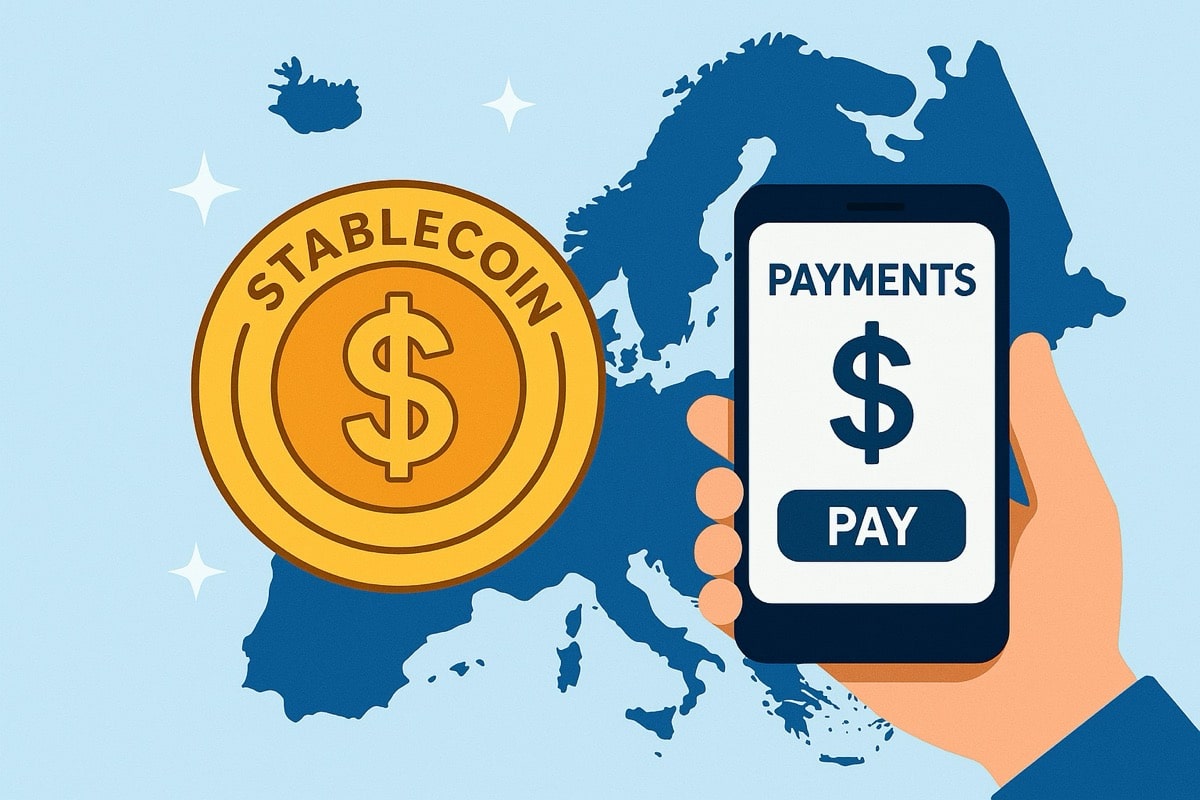For Europe’s payments sector, the collaboration between Worldline and Fipto is again demonstrating the operational and regulatory readiness of stablecoin payments. The initiative underscores how the continent’s financial ecosystem is evolving beyond traditional rails toward a model where digital assets and fiat coexist seamlessly under a unified regulatory and technological framework.

Worldline, one of the world’s leading payment service providers, has announced a strategic partnership with Fipto, a regulated European fintech specializing in stablecoin payment infrastructure. The collaboration aims to integrate stablecoins into Europe’s payment ecosystem and demonstrate how digital and traditional payment rails can operate in tandem.
The initiative comes at a time when stablecoin transactions are skyrocketing, becoming one of the fastest-growing segments in the global digital asset space. According to market analysts, transaction volumes using major stablecoins such as USDC and EURC have surged by over 250% in 2025, driven by demand from fintechs, payment processors, and global merchants seeking faster, cheaper settlement options. The partnership between Worldline and Fipto reflects a growing consensus that stablecoins are moving from experimental use cases to becoming a core component of the next-generation financial infrastructure.
The collaboration will focus on developing and deploying stablecoin-based payment and settlement use cases across Europe and the Asia-Pacific (APAC) region. The two companies plan to leverage the 24/7 programmability and transparency of stablecoins to enable faster transactions, instant cross-border settlements, and greater liquidity efficiency, while ensuring interoperability with existing banking systems and compliance with European regulations.
Worldline said the partnership underscores its long-term vision to build sovereign and innovative digital payment rails that align with Europe’s push for financial resilience and technological independence. The company sees stablecoins as a critical step toward a hybrid payment future, where digital assets complement, rather than replace, traditional money. Its leadership emphasized that collaboration across the payment value chain allows institutions to accelerate innovation, strengthen capabilities, and co-create new use cases that deliver tangible benefits to merchants and financial institutions.
Fipto, meanwhile, brings its regulatory status and blockchain-native expertise to the partnership. The fintech, which holds licenses from regulators in France and Luxembourg, is positioning itself as a bridge between traditional finance and blockchain infrastructure. Its management said that by combining Worldline’s extensive merchant reach and institutional relationships with Fipto’s agile technology stack, the two companies aim to create a practical and compliant pathway for stablecoin adoption at scale.

The partnership aligns with a broader trend in which fintechs and payment providers are racing to integrate stablecoin rails into their platforms. In 2025, several global payment firms, including PayPal, Stripe, and Revolut, have introduced or expanded stablecoin settlement capabilities. Analysts say that the technology’s appeal lies in its ability to settle transactions instantly across borders, avoid the delays of correspondent banking, and provide transparency unmatched by traditional systems.
In Europe, this trend has gained strategic relevance amid efforts to maintain digital monetary sovereignty. Policymakers and industry groups have highlighted the need for the region to develop its own stablecoin infrastructure rather than rely solely on dollar-backed tokens issued by U.S. entities. The introduction of euro-denominated stablecoins, coupled with the progress of the European Central Bank’s digital euro project, has made 2025 a defining year for Europe’s payment modernization.
Worldline’s partnership with Fipto therefore represents both a commercial and a policy-aligned move, serving as a demonstration of how regulated stablecoins can complement the traditional banking framework while reinforcing Europe’s position in the evolving digital payments landscape. The companies are expected to pilot merchant-facing solutions in the coming months, focusing on real-world applications such as instant payouts, treasury optimization, and cross-border settlements.
Industry observers note that stablecoins are increasingly being viewed not just as speculative assets but as infrastructure-grade instruments capable of supporting day-to-day commerce. Their programmability allows for automated reconciliation, dynamic invoicing, and conditional payments – features that traditional systems struggle to deliver without intermediaries or added costs.
The partnership illustrates the accelerating pace at which fintechs are adopting stablecoins and how Europe’s payment leaders are working to ensure that innovation happens within secure, compliant, and sovereign structures. As stablecoin adoption continues to surge globally, initiatives like this may well define how the next generation of payments is built and governed in Europe.









